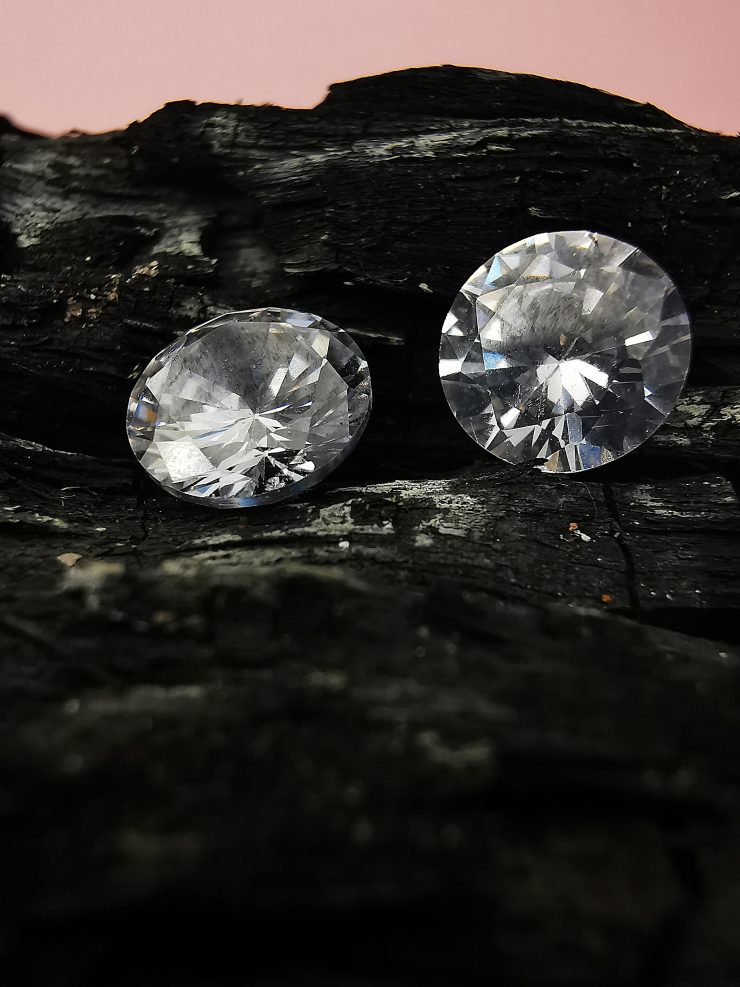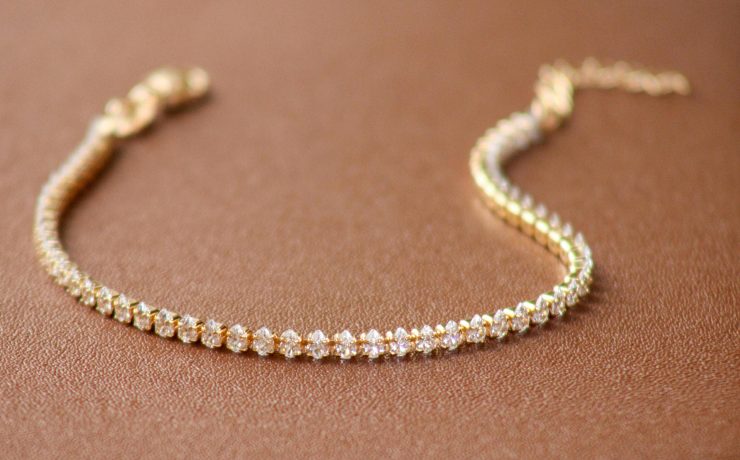Introduction to Lab Diamond Certification
As lab-grown diamonds become increasingly popular among consumers, understanding how to evaluate and verify their quality is more important than ever. Lab diamond certificates serve as an essential tool in this process, offering an unbiased, professional assessment of a diamond’s characteristics. These certificates, also known as grading reports, are issued by reputable gemological laboratories and contain crucial information regarding a diamond’s physical and optical properties. The purpose of these certificates is to protect consumers, retailers, and manufacturers by providing transparency and consistency in quality assessment. Unlike marketing claims or sales talk, certificates are objective documents created by trained gemologists using standardized methods. Without certification, it is extremely difficult for an average buyer to determine the true quality or value of a lab-grown diamond. In many ways, a certificate acts as a diamond’s identity card, offering insights that go far beyond what meets the eye. This document not only confirms that the stone is lab-created but also provides a technical breakdown of its 4Cs—cut, color, clarity, and carat weight—as well as additional grading metrics. Therefore, understanding how to read and interpret lab diamond certificates is essential for anyone making an informed purchasing decision.

Who Issues Lab Diamond Certificates?
Not all diamond certificates are created equal. The credibility of a lab diamond certificate largely depends on the authority and standards of the issuing laboratory. Some of the most well-known and trusted gemological institutes include the Gemological Institute of America (GIA), the International Gemological Institute (IGI), and the American Gem Society (AGS). Each of these organizations uses its own grading scales, terminology, and testing methods, but all aim to provide reliable and consistent information about a diamond’s attributes. For lab-grown diamonds in particular, IGI has become a widely used certifier due to its early adoption of lab diamond grading practices and its focus on technological advancements in gemology. The GIA, while historically more conservative, has also adapted to include grading for lab-created stones, although its reports may differ in format and depth compared to those for natural diamonds. It’s important to verify that a certificate is issued by a recognized authority, as some lesser-known or in-house laboratories may inflate grades to make diamonds appear more valuable than they actually are. Authentic certificates will also have security features such as watermarks, barcodes, or online verification tools to ensure the document has not been tampered with. Ultimately, knowing which organization issued the certificate is the first step in evaluating the trustworthiness and accuracy of the information provided.
The 4Cs and What They Really Mean
A lab diamond certificate typically includes a detailed breakdown of the diamond’s 4Cs: Cut, Color, Clarity, and Carat weight. These four factors are considered the global standard for evaluating the quality and pricing of both natural and lab-grown diamonds. Cut refers to how well a diamond has been shaped and faceted, affecting its brilliance and light performance. Grades usually range from Excellent to Poor, with an Excellent cut maximizing sparkle and visual appeal. Color is graded from D (colorless) to Z (light yellow or brown), with colorless stones being the most rare and valuable. Lab diamonds are often produced with minimal color impurities, but subtle differences can still influence price and desirability. Clarity measures the presence of internal flaws (inclusions) and external blemishes, using a scale that runs from Flawless (FL) to Included (I). Since lab diamonds are created in controlled environments, they tend to have fewer inclusions than natural ones, though they can still contain metallic inclusions specific to the growth process. Finally, Carat weight denotes the size of the diamond, but it’s important to understand that carat alone doesn’t determine value. A well-cut smaller diamond can appear larger and more vibrant than a poorly cut larger stone. Each C affects the overall grade and pricing, and understanding how these interact provides a clearer picture of the diamond’s quality.
Additional Grading Factors Beyond the 4Cs
While the 4Cs form the cornerstone of diamond grading, many lab diamond certificates include additional characteristics that offer a more nuanced evaluation. For example, polish and symmetry are crucial for determining how precisely a diamond has been finished. These elements influence the diamond’s overall brilliance and are usually graded on a scale from Excellent to Poor. Fluorescence, another commonly reported feature, refers to the diamond’s reaction under ultraviolet light. This can range from None to Very Strong and can sometimes affect a diamond’s appearance under certain lighting conditions. While fluorescence doesn’t necessarily diminish value, strong or uneven fluorescence may cause a hazy look in certain diamonds, making this a factor worth considering. Girdle thickness, culet size, and table percentage are also often included in advanced certificates, and they all relate to the proportions and structural integrity of the stone. Furthermore, lab certificates may specify whether the diamond was grown using the High Pressure High Temperature (HPHT) method or the Chemical Vapor Deposition (CVD) method. Each method has its own implications for color, inclusions, and post-growth treatment. Some reports even mention if a diamond has been subjected to treatments like annealing or irradiation to enhance color. These additional details enrich the certificate, providing deeper insight into the quality and origin of the lab diamond.

Interpreting a Lab Diamond Certificate Step-by-Step
Reading a lab diamond certificate may seem daunting at first due to the technical language and array of data, but breaking it down step-by-step can simplify the process. Typically, certificates begin with general information such as the diamond’s report number, shape, and cutting style. The report number is essential for verification purposes and can be used on the laboratory’s official website to confirm authenticity. Next, you’ll encounter the 4Cs—cut, color, clarity, and carat weight—usually displayed in a standardized layout or chart. Pay close attention to the cut grade, as it has the greatest impact on the diamond’s brilliance. A diamond with excellent color and clarity may still appear dull if it is poorly cut. The clarity diagram, if included, will map out the location and type of inclusions, which can help buyers decide whether any visible flaws are acceptable. Certificates often contain a proportions diagram that provides precise measurements like table size, depth percentage, and crown and pavilion angles. These measurements determine the optical performance and symmetry of the diamond. Additionally, the certificate may list comments about any treatments or growth features, such as metallic inclusions from the CVD or HPHT process. Understanding how to systematically interpret each section empowers consumers to make informed comparisons between diamonds and recognize which features are most valuable to their specific preferences.
Differences Between Certificate Types and Lab Standards
Not all grading labs use the same terminology, scoring metrics, or reporting format, which is why it’s important to understand the differences between the main certification bodies. The Gemological Institute of America (GIA) tends to be the most conservative in grading, especially in terms of color and clarity. GIA reports also specify whether a lab diamond was created using HPHT or CVD technology, and they refrain from using the term “synthetic” in consumer-facing reports, reducing confusion. International Gemological Institute (IGI), on the other hand, is more widely used for lab-grown diamonds and provides detailed reports with comprehensive diagrams and analysis. IGI also clearly denotes whether a diamond is lab-grown and whether it has been treated post-growth. Another notable institution is the American Gem Society (AGS), which uses a 0 to 10 numerical scale for cut quality and light performance. The GCAL (Gem Certification & Assurance Lab) is another option, known for offering guaranteed grading accuracy and even video documentation of light performance. Each lab has its pros and cons; while IGI may be quicker and more affordable, GIA’s stricter standards often carry more weight in resale or appraisal scenarios. Understanding these differences can guide buyers in choosing diamonds that meet both their aesthetic and value expectations. Additionally, comparing certificates from different labs can reveal grading discrepancies that affect pricing and perceived quality.
How to Verify a Lab Diamond Certificate’s Authenticity
With the growth of the lab diamond market, ensuring that a certificate is legitimate and untampered has become increasingly important. Each reputable certificate comes with a unique report number that can be verified directly on the issuing laboratory’s website. Buyers should make this step part of their purchasing process, particularly when buying diamonds online or from less-established retailers. In addition to the report number, authentic certificates often have built-in security features such as holograms, watermarks, barcodes, embossed seals, or micro-printing. These features make it difficult to forge or alter documents. Some labs, like IGI and GCAL, also offer digital certificates and verification via QR codes, which link directly to an online version of the report. Verifying these details ensures that the certificate belongs to the specific diamond being purchased. Furthermore, many lab-grown diamonds have their report number laser-inscribed on the girdle of the stone, which can be examined under magnification. This inscription should match the certificate and offers another layer of assurance. Buyers are encouraged to request a jeweler’s loupe or microscope to view the inscription in-store or ask for photographic verification when buying remotely. Taking these verification steps ensures you are getting a diamond that truly matches its certification, eliminating the risk of fraud or misrepresentation.
Using Certificates to Compare and Choose Diamonds
Lab diamond certificates are not just technical documents; they are powerful tools that help consumers make apples-to-apples comparisons between different stones. Because the grading criteria are standardized within each lab, buyers can use certificates to compare quality and value across multiple options. For instance, if two diamonds are both 1.00 carat and rated as VS1 in clarity, but one has a better cut grade, the certificate makes this distinction clear and measurable. Similarly, if price differences exist between seemingly identical stones, a close reading of the certificate may reveal variations in fluorescence, polish, or symmetry that justify the cost disparity. In this way, the certificate can help prioritize which attributes matter most to the buyer—whether it’s maximizing brilliance, minimizing inclusions, or achieving a certain carat size within budget. Additionally, certificates can be used in resale, insurance claims, and appraisals, offering long-term value beyond the initial purchase. It’s also worth noting that a lab diamond certificate provides peace of mind when purchasing from an online retailer, where visual inspection is limited. In such cases, understanding the language and implications of the certificate becomes a buyer’s most reliable method of due diligence.
Conclusion: Why Certification Matters in the Lab Diamond Market
In a rapidly evolving market where lab-grown diamonds are gaining both popularity and legitimacy, certification stands as the cornerstone of transparency and trust. A well-documented lab diamond certificate transforms what could be a speculative purchase into an informed investment, ensuring the buyer knows exactly what they are getting. It demystifies technical attributes, allows for reliable comparison, and provides a layer of security against misrepresentation. As the technology for creating diamonds continues to advance, certification also plays a key role in distinguishing between different production methods and identifying any treatments applied to the stone. From novice buyers to seasoned collectors, understanding and interpreting lab diamond certificates is an essential skill that safeguards financial and emotional investments alike. Ultimately, a diamond’s sparkle may be its most visible feature, but its certificate is what guarantees that brilliance has a foundation in truth, science, and ethical transparency.